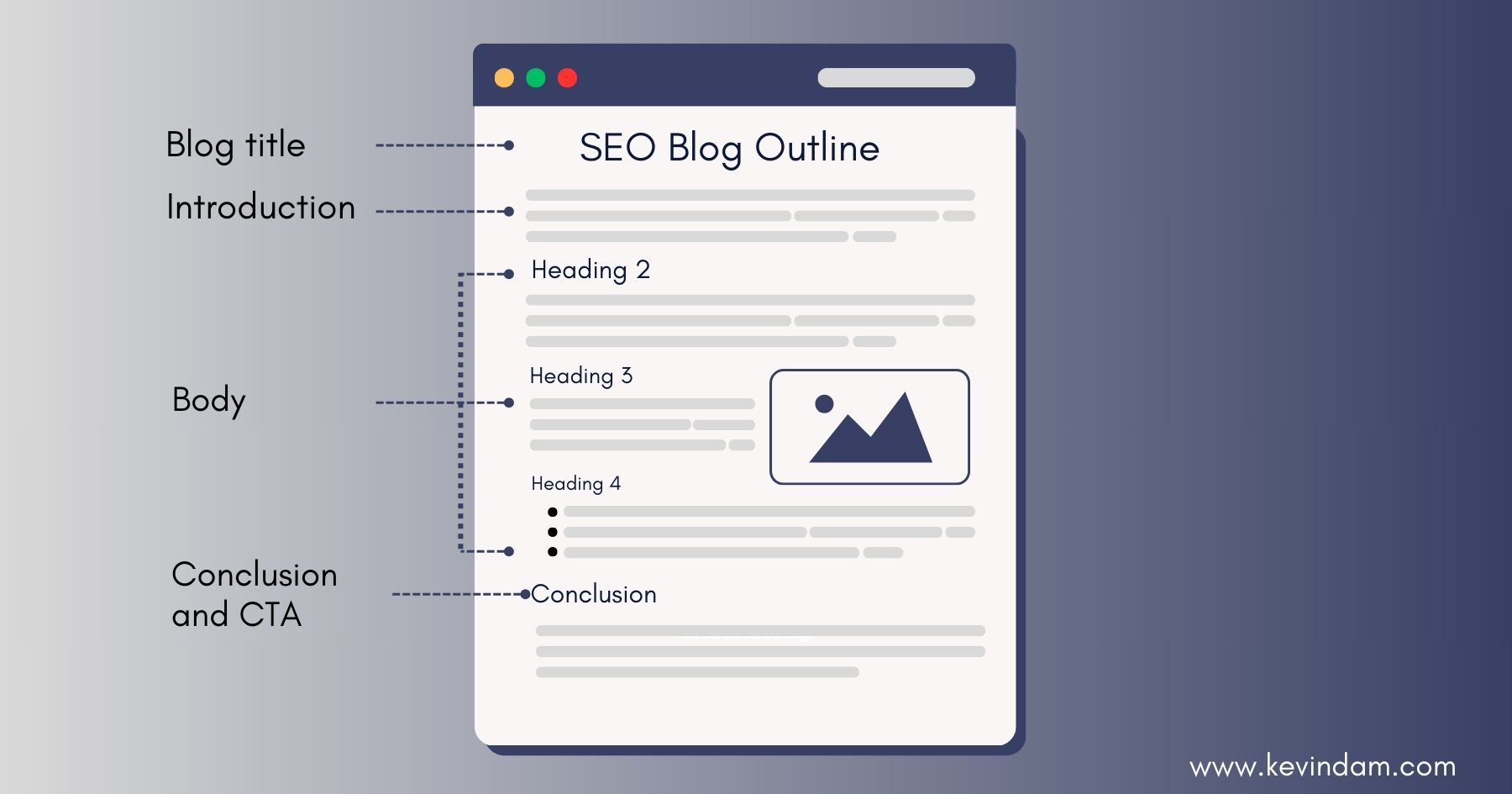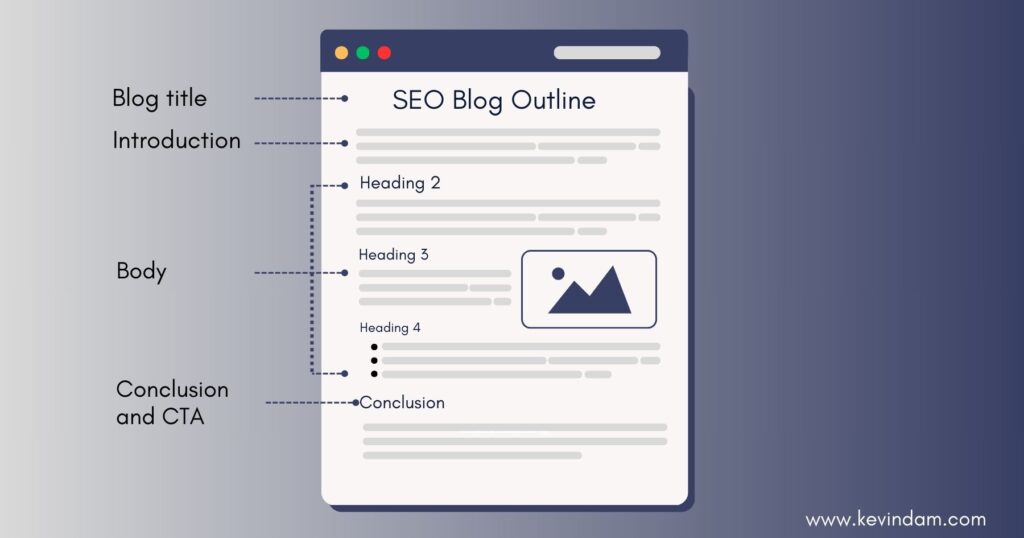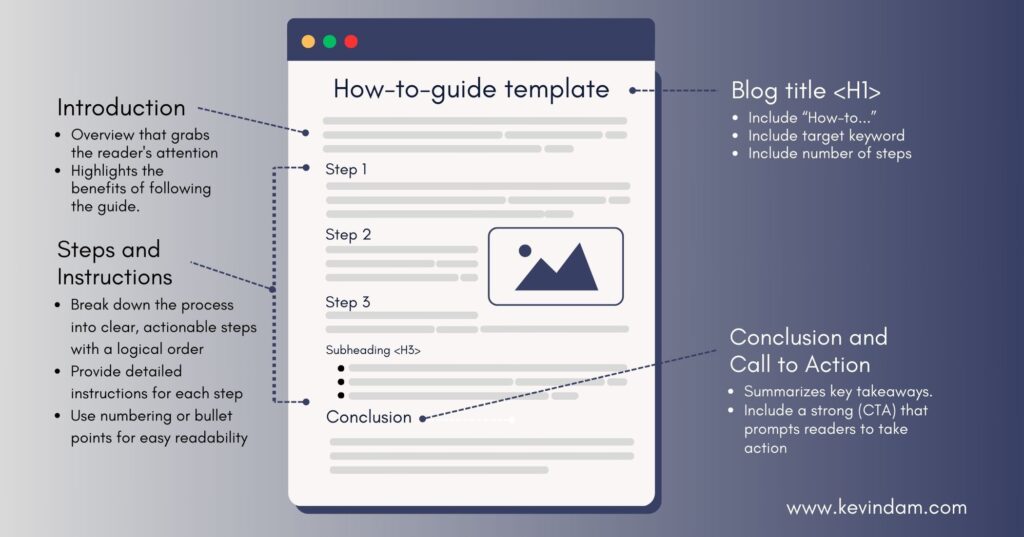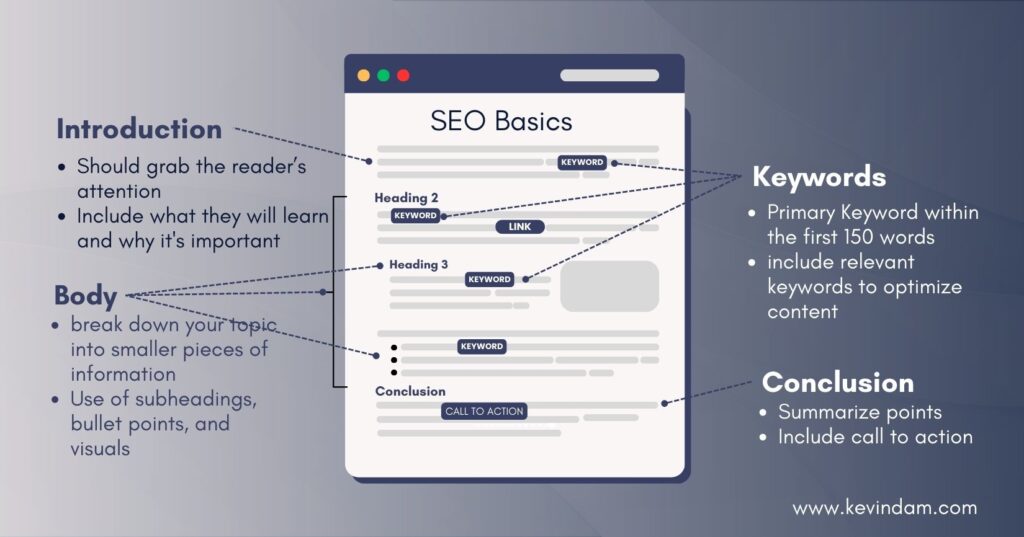
Last Updated July 22, 2024
9 Blog Post Templates to structure your content

Blog post templates provide a structured framework to create engaging and organised content. The article highlights several types of templates, each serving different purposes and audience preferences.
This article provides 7 proven blog post templates into nine effective templates, including how-to guides, listicles, and case studies, each designed to enhance the presentation and align with search intent. These templates offer specific guidelines for creating effective titles, introductions, subheadings, action items, conclusions, and the use of visuals.
These templates not only improve readability but also boost engagement and drive traffic to your blog.
Ideas for Blog Post Templates
When it comes to creating compelling content, there are numerous blog post templates to consider. Each template offers a unique approach and serves different reader preferences, catering to various topics and styles.
Let’s explore some of the most effective and versatile options:
1. How-To Guides
How-to guides are immensely popular because they provide step-by-step instructions that help readers solve problems or learn new skills. Whether it’s a cooking recipe, a DIY project, or a technical tutorial, how-to guides offer practical value to your audience.
They often include clear visuals, such as photos or video tutorials, to enhance the learning experience and make the content more relatable.
2. Listicles
Listicles are a favorite among online readers due to their easy-to-digest format and actionable tips.
These posts typically feature a list of 10-25 actionable tips or strategies on a specific topic. Listicle posts tend to be search engine friendly and can attract organic traffic by providing concise, valuable information in an easily scannable format.
3. Case Studies
Case studies offer real-life examples and detailed insights into specific experiences or projects.
They often outline challenges, actions taken, and results achieved, making them relatable and informative for the audience. Whether it’s a business success story or a personal achievement, case studies provide valuable lessons and inspiration.
4. Interviews
Interviews bring fresh perspectives to your blog by featuring conversations with industry experts, thought leaders, or inspiring individuals.
These posts provide valuable insights, foster connections with influential figures, and can significantly boost reader engagement. Interviews offer readers an opportunity to learn from seasoned professionals and gain new perspectives on relevant topics.
5. Product Reviews
Product reviews are essential for informing consumers about various products or services’ features, benefits, and drawbacks.
Honest and comprehensive reviews build credibility and trust with your audience while helping them make informed purchase decisions.
6. Comparison Posts
Comparison posts present a detailed analysis of two or more products, services, or solutions within a specific niche.
These posts help readers weigh the pros and cons of different options before making important decisions. They aim to simplify complex choices by providing side-by-side comparisons.
7. Personal Stories
Personal stories add a human touch to your content by sharing authentic experiences, challenges overcome, or lessons learned.
These posts create emotional connexions with readers, allowing them to relate to your journey and take away meaningful insights from your experiences.
8. Infographics
Infographics are visually appealing and highly shareable tools for conveying complex information in a concise and engaging manner.
They condense data, statistics, or processes into eye-catching graphics that make it easier for readers to understand key concepts at a glance.
9. Research Reports
Research reports offer in-depth analysis and findings based on thorough research in a particular field or industry.
These authoritative posts provide valuable data-driven insights that establish credibility and expertise in your niche.
By incorporating these diverse blog post templates into your content strategy, you can effectively engage your audience with versatile and valuable content that meets their diverse interests and preferences.
The Power of How-to Formats

Imagine baking a cake. You have all the ingredients set out, but you’re unsure what to do next. Then, your friend walks in and gives you step-by-step instructions on mixing the batter, preheating the oven, and baking the perfect cake.
That feeling of relief and clarity is precisely what a well-crafted how-to blog post aims to achieve for its readers.
How-to formats offer clear, direct guidance through a process that might seem daunting or complex.
This content serves a specific user intent: providing solutions, teaching new skills, or guiding readers through challenging tasks. Whether fixing a leaky faucet or learning how to code, the actionable steps in a how-to post fulfil search intent, making it a popular and effective format for bloggers looking to engage with their audience and provide value.
If you’re writing about home gardening, creating a how-to post on “5 Steps to Grow Your Own Herbs Indoors” can effectively guide your audience through the process.
By breaking down the steps in a simplified manner with clear language and visuals, you can empower your readers and provide them with practical knowledge that they can apply right away.
Visuals are also important in enhancing the effectiveness of how-to formats. Including diagrams, infographics, or step-by-step images alongside clear and concise instructions can significantly improve reader engagement and understanding.
Just as assembling furniture without an instruction manual is frustrating and often leads to mistakes, well-visualised directions in a how-to blog post act as a visual roadmap for your readers.
When drafting your own how-to post, put yourself in the shoes of your reader – anticipate their questions, concerns, and potential roadblocks.
The power of how-to formats lies in their ability to deliver practical value through clear language, visuals, and actionable steps—truly fulfilling the search intent of users seeking solutions and guidance.
Lists That Engage the Reader
When it comes to capturing and retaining reader attention, one format rises above the rest—the listicle. Readers appreciate lists for their organised, easy-to-digest content that provides quick takeaways on a particular topic.
They’re also known for generating high engagement and social shares because they offer valuable content in a convenient package.
Readers are often attracted to the promise of concise, actionable tips and strategies that benefit them somehow.
For instance, imagine a reader scrolling through their social media feed. Amidst a sea of text-based posts, an attention-grabbing headline catches their eye: “5 Simple Steps to Transform Your Cooking Skills.”
Instantly intrigued, they click through and find a neatly organised list with practical cooking tips they can start using right away. It’s about presenting information and offering something immediately useful that adds value to the reader’s life.
Crafting Effective Listicles

But how do you ensure your listicles stand out and truly engage your audience?
Here are some tips for crafting effective listicles that draw in readers and keep them coming back:
- Actionable Content: Every item on your list should provide actionable, practical value to the reader. Whether it’s step-by-step instructions, useful resources, or insightful tips, each point should be something the reader can actively use in their daily life or work.
- Concise Yet Comprehensive: Keep your points clear and to the point while maintaining depth and substance. Avoid fluff and filler content; readers seek value and insights from each item on the list.
- Engaging Headlines: A compelling headline is crucial to attracting readers’ interest. Highlight the key benefit or promise of your listicle to draw readers in and pique their curiosity.
- Visual Appeal: Incorporate visuals such as images, infographics, or videos to complement your written content. Visual elements break up text and enhance the overall allure of your listicle.
- Readability: Structure your listicle with clear subheadings and bullet points for easy scanning. Make it effortless for readers to navigate through your content and extract information quickly.
These strategies contribute to an engaging user experience that encourages readers to spend more time on your blog post, share it with others, and return for more valuable insights in the future.
By implementing these best practices, you can create listicles that not only capture attention but also deliver meaningful takeaways that resonate with your audience, driving higher engagement and social sharing of your content.
Incorporating Success Stories
Imagine feeling stuck on a problem and thinking you’re all alone. Then, a success story comes along, and suddenly, everything becomes clearer. It’s like the light at the end of the tunnel. That’s how powerful sharing success stories and real-life examples can be.
Sharing a success story or a real-life example in your blog posts is like giving your readers proof that what you’re talking about actually works. It shows them that your advice, product, or service isn’t just theoretical — it’s practical, it’s been done before, and it can work for them too.
Let’s say you’re writing about a new technique to improve productivity. You can talk about the benefits and features all day long, but when you weave in a real-world example of someone who used your technique and saw a 30% increase in productivity, suddenly, your readers can see themselves achieving the same results.
By incorporating relatable and modest success stories into your content, your readers are more likely to feel inspired and confident to take action. It’s powerful because they’re not just hearing from you; they’re seeing fellow individuals like themselves achieving success with your methods. It adds authenticity and trust to your brand.
Now that we understand how compelling these success stories can be for our readers, let’s explore some effective ways to incorporate them into our blog post templates.
Leveraging Interviews for Genuine Content
Speaking with industry experts, influencers, or satisfied customers presents the opportunity to infuse your blog with depth and authenticity. Interview-based content weaves informative answers into a relatable narrative, resonating with your audience by incorporating stories and real-life insights.
Personal touch. When you interview someone for your blog, you offer your audience a glimpse into another person’s experiences and knowledge. This personal touch deepens the connection between you and your readers.
Diverse perspectives. Incorporating interviews into your blog adds diverse perspectives that enrich your content. While your regular posts are often based on your opinions and research, including interviews expands the horizons for your audience by presenting varied viewpoints.
Authenticity. Interviews add a layer of authenticity that regular written content cannot achieve alone. Hearing directly from industry experts or satisfied customers builds trust and credibility for your brand.
When conducting interviews, asking thoughtful questions is essential to elicit insightful responses. The key is to go in-depth into the subject matter to provide meaningful takeaways for the audience. Integrating this approach into your blogging strategy can elevate the value of your content while strengthening connections with the audience.
Crafting Your Content Effectively

Creating content for your blog is comparable to cooking a tasty dish. Just as a great dish requires fresh and quality ingredients, so does a great blog post, which requires excellent ideas and knowledge. The way you present and express these ideas is like the flavor of the dish, giving it its unique taste.
Captivating Introductions
Let’s talk about captivating introductions. Just like an appetiser sets the tone for a meal, your introduction should grab your reader’s attention and make them eager to read more.
It’s your chance to tell them what they will learn and why it’s important. Sometimes a funny or intriguing story can do the trick; other times, a bold statement or question can hook them in.
Informative Body
Informative body content carries the most weight in your post, just like the main course in a banquet.
This is where you can break down your topic into smaller pieces of information using subheadings, bullet points, and visuals to make it more digestible to your audience.
Compelling Conclusions
Compelling conclusions are like the dessert at the end of a satisfying meal. They leave a sweet taste in your readers’ mouths, urging them to return for more.
Summarise your main points one last time and end with a call to action if appropriate.
Keywords
Now, let’s talk about keywords. Every great chef knows that seasoning can make or break a dish.
Similarly, incorporating relevant keywords in your content is crucial for improving SEO and attracting more readers to your blog on an ongoing basis.
Remember that people have different tastes, so it’s essential to maintain reader engagement throughout. Use anecdotes, examples, and real-life experiences to illustrate key points and connect with your audience personally.
By structuring your blog posts with captivating introductions, informative body content, compelling conclusions, and incorporating relevant keywords, you’re setting yourself up for success.
Just as a thoughtful chef plans their meals with care and precision, so too should you approach the crafting of every blog post on your blog.
Aiming for Stellar Writing
Creating a compelling blog post is similar to producing a beautiful piece of artwork. You want it to stand out, captivate your readers, and leave a lasting impact.
- The initial and essential step is to strive for excellent writing that is free of errors, detailed, and engaging in its delivery.
Imagine yourself as a storyteller painting vivid pictures with your words. You want your readers to be drawn into the narrative and feel like they are right there with you. To achieve this, clarity and precision are essential. When drafting your content, strive for concise, well-researched material that communicates with crystal-clear clarity.
- Eliminate unnecessary jargon or complicated language that might hinder understanding.
Consider the difference between:
- “The event was exceedingly beneficial for all participants.”
- “The event greatly benefited everyone involved.”
In example 2, the language is clear and to the point, making it easier for the reader to grasp the message without being bogged down by unnecessary complexity.
- Seek originality in your writing style. Don’t be afraid to infuse your personality into your content; it’s what sets you apart from the rest.
Engage with your audience using relatable examples and a conversational tone, fostering a personal connection that keeps them invested throughout the entire blog post.
Imagine sitting with a friend over coffee and telling them an enthralling tale. You’d draw them into the story with complete details, relatable experiences, and natural speech patterns.
Your blog posts should do the same—transporting your readers into your world, whether you’re discussing travel tips, sharing cooking recipes, or offering professional advice as an SEO consultant.
Let’s take a look at these two sentences:
- “An SEO expert provides in-depth guidance on optimising web content to drive organic traffic.”
- “Picture having a seasoned SEO consultant beside you, sharing insider tips on boosting website visibility—bringing in more visitors without breaking a sweat.”
In example 2, the tone is conversational and engaging, drawing in the reader by creating a personal connection.
By infusing clarity, precision, originality, storytelling elements, and relatable examples into your blog posts, you can create content that is not only error-free and concise but also resonates deeply with your audience, keeping them engaged every step of the way.
Remember, the best artists always aim for perfection.
With a clear understanding of crafting compelling content in mind, let’s now explore how to find inspiration from sample blog posts—a crucial step in honing your skills as a blogger.
Finding Inspiration from Sample Blog Posts

When constructing your own blog, examining what others are excelling at is beneficial. Finding inspiration involves learning from others to create exceptional content, not imitating them.
To locate these influential posts, begin by exploring successful blogs within your niche or industry. The ones abundant in comments, likes, and shares reveal what captivates readers. These blogs serve as blueprints for you to study. Observe how they articulate and structure their content, and identify which resonates most with you as a reader.
Have you ever wondered why some blog posts are more interesting to read than others? Is it their way of telling a story, catchy headlines, or the helpful tips they provide?
Make a note of all the elements that attract you and analyse how you can integrate those aspects into your own writing. Don’t hesitate to conduct A/B testing with different blog post templates on your website. This way, you can compare their performance and measure audience engagement. Sometimes, what resonates in one niche might not be in another, so conducting tests provides a comprehensive understanding of your audience’s preferences.
For instance, consider running a food blog where recipes with step-by-step photo guides receive more shares and comments than those without photos. Attempt integrating this element into your template and observe its impact on engagement.
Remember, it’s not about reproducing someone else’s work—it’s about learning from their successes and tailoring it to align with your style and objectives. By comprehending the factors underlying other blogs’ success and conducting tests on your site, you can refine your blog post templates to resonate more effectively with your target audience.
Conclusion
The versatility of blog post templates, ranging anywhere from how-to guides and listicles to personal stories and research reports, can significantly enhance your blog’s appeal and effectiveness. Each template, from how-to guides to research reports, offers unique benefits that cater to different reader preferences and search intents. Whether you aim to inform, inspire, or entertain, these templates provide a solid foundation for crafting compelling blog posts that resonate with your audience and drive higher engagement.
